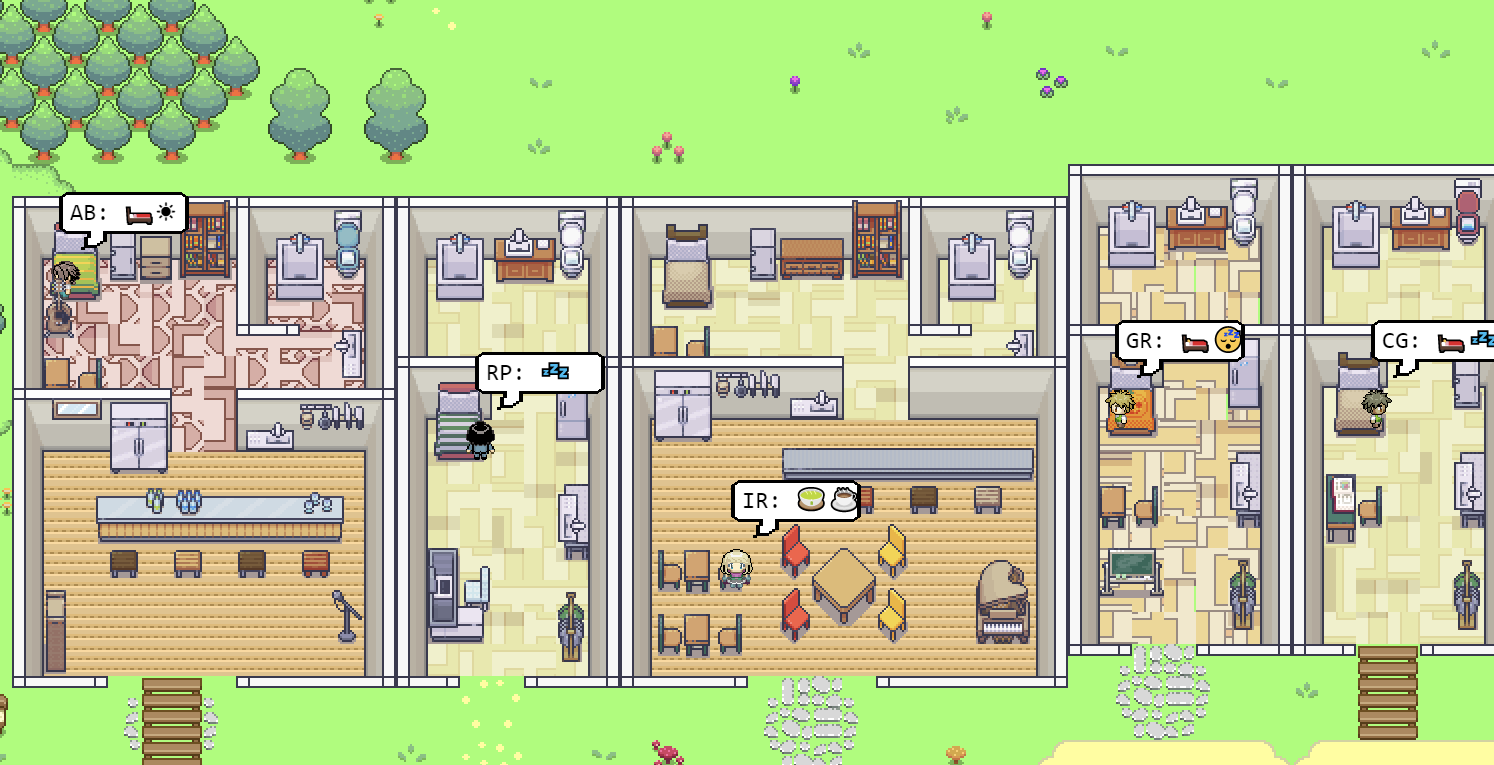Imagine a world where computational software agents simulate believable human behavior, a world where AI artists paint and authors write, where these AI agents form opinions and initiate conversations, and where memories are synthesized into higher-level reflections to plan behavior. This is the world of generative agents. In this article, we will explore the groundbreaking paper that introduces generative agents and their implications on the future of gaming and other applications.
Overview of the Paper
A fascinating new paper from Stanford and Google titled “Generative Agents: Interactive Simulacra of Human Behavior” introduces generative agents, computational software agents that simulate believable human behavior. The researchers created a simulated world in which they placed 25 generative agents, each with its own personality.
These agents wake up, cook breakfast, head to work, and form opinions just like humans. The fascinating part is that these agents remember and reflect on past days as they plan their next days, using memories of interactions they’ve had. All these agents are driven by a large language model, and the architecture extends that large language model to store complex records of agents’ experiences using natural language.
The agents produce believable individual and emergent social behaviors, just like humans. This work has significant implications for the gaming industry, as it allows for non-playable characters (NPCs) in video games to have their own character and personality, interacting with players more naturally.
Simulation Environment: Smartville
The authors simulated a small sandbox world called Smartville, inspired by the popular game “The Sims.” Smartville consists of co-living spaces, houses, cafes, bars, stores, parks, colleges, groceries, and pharmacies. The idea was to explore how social behaviors could emerge among AI agents.
Three main components were included in the agents’ architecture:
- Memory Stream: Records agents’ experiences.
- Reflection: Synthesizes memories into higher-level inferences.
- Planning: Translates conclusions into action plans.
These reflections and plans influence agents’ future behavior, allowing them to take actions independently.
Creating In-Game Events and Interactions
Generative agents can simplify the process of creating in-game events and interactions. For example, instead of manually scripting the behavior of multiple characters for a Valentine’s Day party, it is sufficient to tell one agent that she wants to throw a party. These agents can independently interact with each other, and the environment succeeded in spreading the word about the party and showing up. One agent even asks another agent on a date to the party, all from a single user-generated seed suggestion.
Agent Personalities and Interactions
The authors created a one-paragraph natural language description of each agent’s identity, including their occupation and relationship with other agents. These descriptions serve as seed memories for the agent. For example, John Lin is described as a pharmacy shopkeeper with the following description:
“John Lin is a pharmacy shopkeeper at The Vito Market and Pharmacy who loves to help people. He is always looking for ways to make the process of getting medication easier for his customers.”
All the interactions of these agents with their world and among themselves are through natural language. At each timestamp, agents output a natural language statement describing their current action, which is translated into current movements and displayed on the sandbox interface as a set of emojis.
Controlling and Manipulating Agents
Although these AI agents are independent and their interactions happen organically, users also have some control. There are two ways users can interact with the game:
- Communicate with the agent through conversation.
- Issue directives to the agent in the form of an inner voice, which controls the behavior of the agent.
For instance, when told by a user as John’s inner voice, “You’re going to run against Sam in the upcoming election,” John decides to run and shares his candidacy with his wife and son. This demonstrates how users can control and manipulate the environment and behavior of these agents.
A Day in the Life of an Agent
An agent’s day starts with a single paragraph description, and their behavior evolves as they interact with each other and the world. For example, Jonathan wakes up around 7 AM, brushes his teeth, takes a shower, prepares and eats breakfast, and checks the news at the dining table. His son Eddie wakes up, and they have a brief conversation before going about their day.
The behavior of agents changes based on their interactions with other agents. The agents’ architecture controls each agent’s behavior, allowing them to perceive their environment and store perceptions in the memory stream. When they need to perform an action, they retrieve information from the memory stream and plan their next action based on that information. Stored memories are also used to change agents’ behavior, allowing them to reflect on past memories and adjust their interactions with the environment and other agents.
Real-World Applications
Apart from games and NPCs, generative agents have real-world applications. For example, if you are preparing for an interview with a difficult person or personality, you can use AI agents to simulate their behavior and interact with them. This can help you prepare for the interview or other social situations.
Online Demo
Although the online demo is not real-time and presents a pre-computed replay of a simulation that has happened before, you can see the interactions and different agents’ activities. You can select one of the 25 different agents and see what the agent is doing at any given time. This fascinating work has the potential to change the gaming industry and the way we interact with different AI agents, opening up a brand new world of possibilities.
https://reverie.herokuapp.com/arXiv_Demo/
In conclusion, generative agents represent a significant advancement in the world of AI, offering a glimpse into a future where believable human behavior is simulated and interactive. This technology promises to revolutionize gaming and other applications, providing endless opportunities for AI-driven experiences and interactions.
Research paper
https://arxiv.org/pdf/2304.03442.pdf
